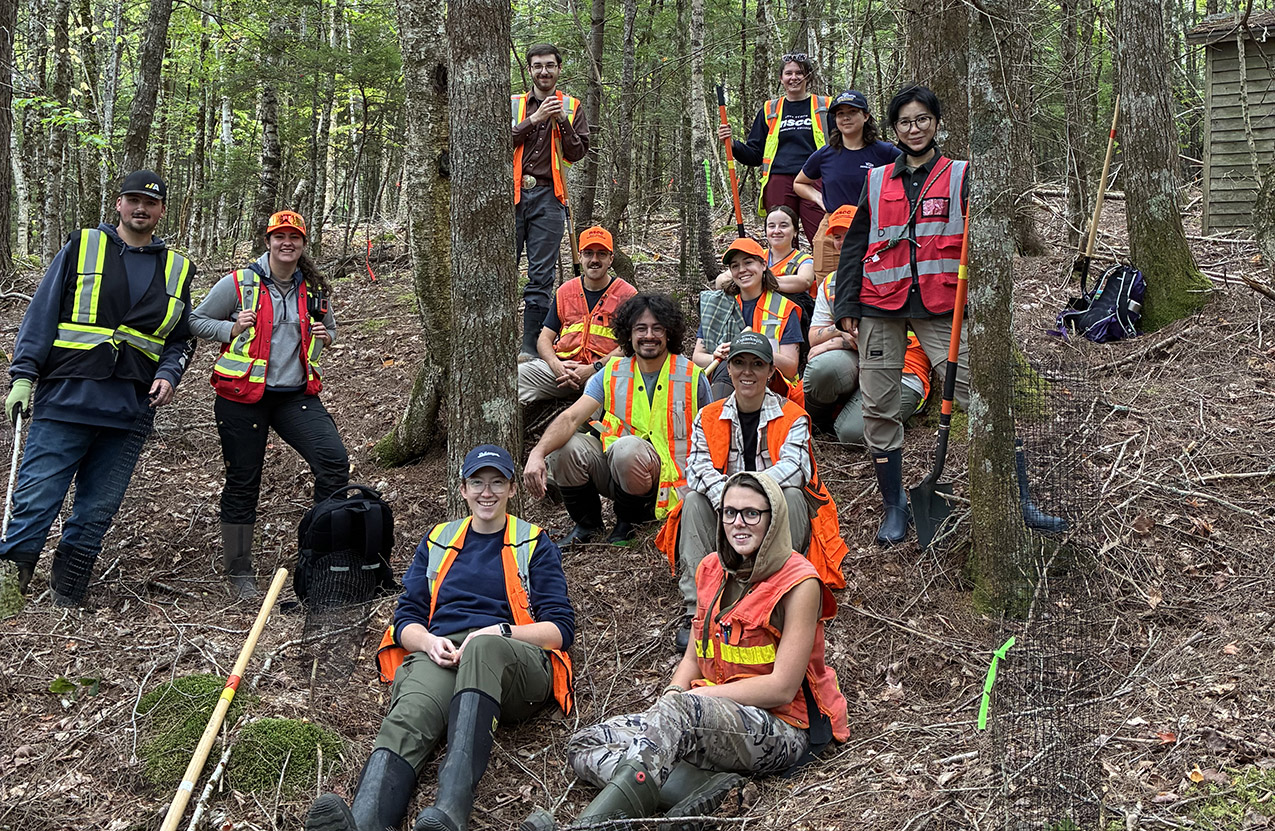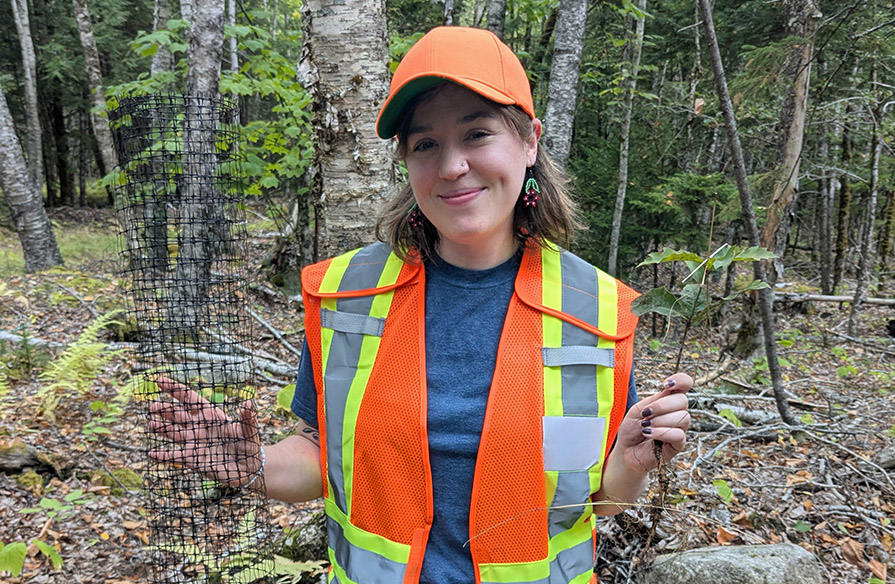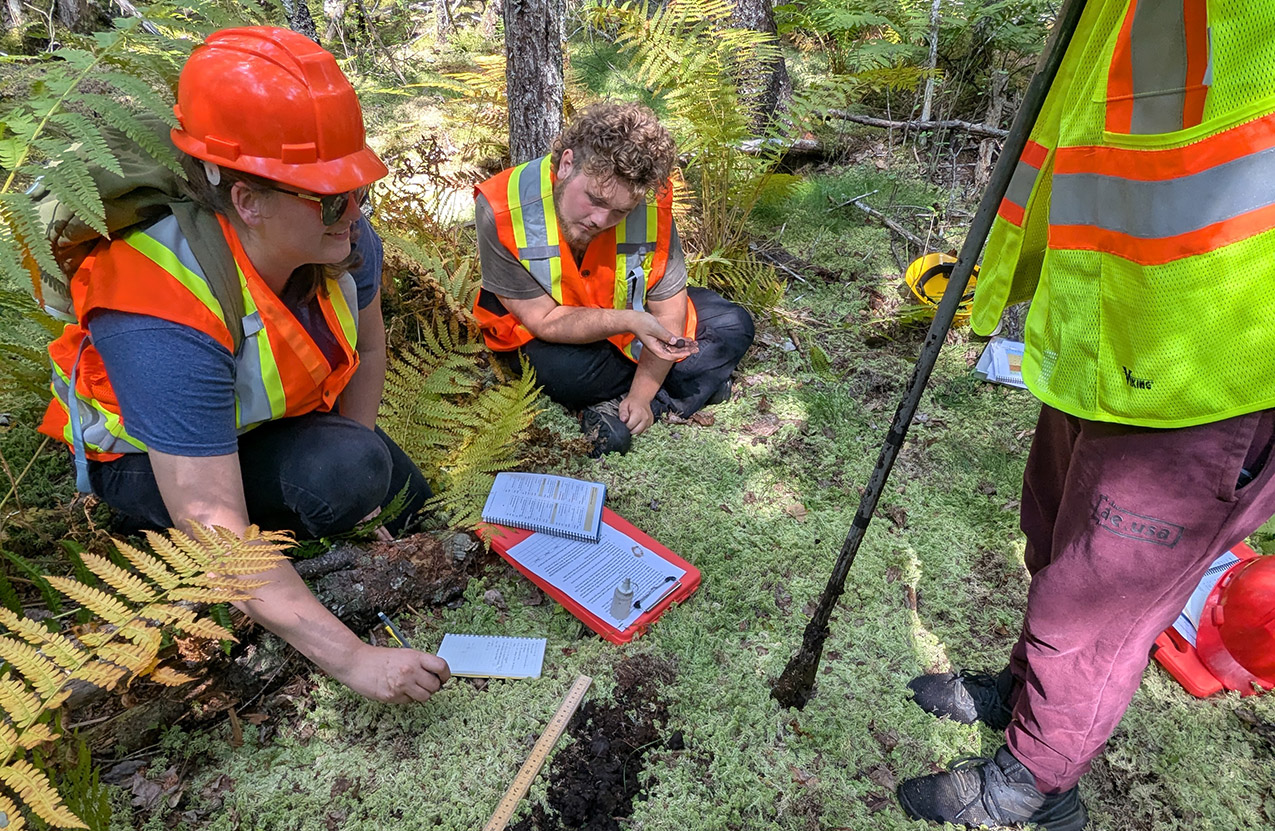NRET students mark National Forest Week in the field

Date: Sep. 25, 2025
Planting for the future
This year’s theme for National Forest Week—Roots of Resilience: From Seed to Canopy—could not be more fitting. Forests and the people who depend on them face mounting pressures: climate change brings unprecedented storms and droughts, invasive pests threaten biodiversity and shifting markets and social values continuously reshape priorities.
In the face of these changes, resilience is built by nurturing both ecosystems and future forest stewards.
To mark the week, students in NSCC’s Natural Resources and Environmental Technology (NRET) program spent a day under the canopy of a streamside hemlock forest, planting climate-resilient species such as red oak and red maple.
“It’s been great to get the students out to the forest to plant some trees,” says Ian Manning, second-year NRET instructor. “We have some hemlock stands here which are at risk of being infested with the Hemlock Woolly Adelgid, a non-native pest. The species we've chosen to underplant are Red Maple and Red Oak, which are two species that are native to the Wabanaki/Acadian Forest so that, if and when these hemlocks succumb to the Hemlock Woolly Adelgid, we will have trees in the understory that are already established and ready to go. They're also trees expected to do well with climate change, so we're planting a forest with the future in mind.”

Building knowledge through science
For students, the day was more than tree planting. It was a chance to connect classroom lessons to the real world.
“Today was great. We learned a lot about this kind of thing in our first year, so it was great to come out here and like, put it into practice,” says Terri Jones, first-year NRET student. “I have done school before – university; compared to university, this is really hands-on and that’s preparing us for the kind of field we want to be going into.”
While second-year students were planting, first-year classmates were immersed in learning the Forest Ecosystem Classification (FEC) system. By combining site, soil and vegetation data, the FEC supports ecosystem-based forest stewardship and helps foresters make management decisions that balance productivity, restoration, biodiversity and soil protection.
“Now I'm the Program Assistant for the Natural Resources and Environmental Technology Program, as of 2 years ago. I’m really happy to be back,” says Haiti Tynes, an NRET graduate from 2020. “I'm learning more, and I think that everyone else is learning more too!”

Mentorship in action
Hands-on learning and real-time mentorship are central to the program’s impact.
"I think being in the field prompts different questions than you would even think of in the classroom," says another first-year NRET student. "It is really nice to have the opportunity to take the theory, apply it, and then have the support of our instructors to answer all questions in real time. You know, I'm holding the soil sample right now. Can you please help me answer these three questions about it, because I haven't seen this before? That sort of thing."
Whether planting oaks beneath vulnerable hemlocks or studying soils to understand ecosystem dynamics, NRET students are preparing to meet tomorrow’s challenges with resilience and knowledge.
By pairing theory with hands-on experience, the program continues to seed inspiration, cultivate skills and grow the next generation of forest stewards, one student, one forest, one tree at a time.
